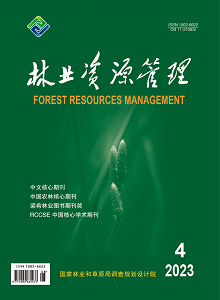In the plain afforestation project area of Daxing District of Beijing,the three site types are selected from the sandy land along the Yongding River,some landaresa inside the sixth-ring road and the east-central loamy land.The study of tree species conservation and allocation is based on the forest conservation rate,tree height and crown width.Preliminary conclusions are drawn:1)In the sandy land along the Yongding River,the ecological adaptation of eleven species including Robinia pseudoacacia,Ailanthus altissima,Robinia pseudoacacia cv.idaho,Populus albavar.pyramidalis,Ulmus pumila cv.jinye,Sophora japonica cv.Golden Stem,Platanus acerifolia,Populus tomentosa,Koelreuteria paniculata,Salix matsudana and 107 Populas L.is good,followed by Ginkgo biloba and Catalpa bungei and Acer mono is worst.2)In the sixth-ring demolition,the seven tree species including Sophora japonica,Koelreuteria paniculata,Robinia pseudoacacia,Fraxinus chinensis,Ginkgo biloba L,Ulmus pumila cv.jinye and Catalpa bungei have good ecological adaptability,followed by Magnolia denudata and Paulownia,and the ecological adaptability of Metasequoia glyptostroboides,Platanus acerifolia and Eucommia ulmoides Oliver is worst.3)In the east-central loamy land,eight species of Robinia pseudoacacia,Sophora japonica,Populus tomentosa,Ginkgo biloba,Populus davidiana,Populus tomentosa,Ulmus pumila.,and Ulmus pumila cv.jinye.have better ecological adaptability,followed by Fraxinus chinensis and Koelreuteria paniculata.Platanus acerifolia and Ailanthus altissima have the worst ecological adaptability.The three site types are all arranged according to the principle that the heights of adjacent tree species are similar.

